The TNOC Roundtable for October 2014 focused on green corridors in cities to support nature, and the ‘natural’ ecology that resides in the city. I am focused on the ecology of the city. The aim of ecologists and scientists to strengthen the capacity of the city to connect nature within and across it, is the same instinct that those of us who focus on the physical shape and function of city have: to enable connectivity than enhances the overall function of the whole.
I wrote in a previous post on this site about how cities are fundamentally natural—they are of a piece with nature, created by the interaction of people and place, and not artificial constructs, fated to always-at-odds-with-the-natural.
The contributors to the green corridor roundtable reinforced this for me. They’re eager for ways to enable connection, build and exchange natural capital, explore how linear spaces and corridors can encourage biotic movement, dispersal, address the challenges of predators and invasive species, and encourage ‘biotic connectivity’.
Look at how similar the challenges are for building the physical city for its human inhabitants, and how similarly people actually behave, with the other species with whom they share their urban home, in their use of it. We face various kinds of predators: over-heated real estate markets fueled by speculation; growing mono-cultures of single land-uses; sprawling residential development that bulldozes down diversities of all kinds.
The ways the physical city and its built environment can be created, in more authentic and organic ways, is a wonderful illustration of ‘biomimicry’: how human processes mimic natural ones.
I first came across this term when its conceiver, author and natural scientist Janine Benyus, came to Toronto in 1997 to speak at a conference on cities convened to celebrate the work of Jane Jacobs. Benyus had written a then little-known book of the same title, Biomimicry: Innovation Inspired by Nature, and Jacobs’ had requested she speak. The book soon catapulted to broad popularity and has spawned a movement to encourage innovation in all forms of design that learns from nature. A primer on the concept, written by Benyus, can be found here, and also another book here in which she writes about the connection of her work to city-building, published by the Jacobs’ inspired Center for the Living City, with Island Press.
In the TNOC Roundtable Kathryn Lwin writes “But to feed itself, a city must first feed its pollinators…[and] facilitate the ‘flow’ of wild pollinators and plants between the built environment, urban farms and nature reserves”.
Kathryn could easily be describing the role of various forms connective tissue in a city, that link people with the resources, contacts and opportunities they seek to meet their needs and fulfill their aspirations. When I was a grant-maker working in New Orleans after Hurricane Katrina, I was surrounded by colleagues from various other foundations also investing in the recovery, most of whom were guided by a ‘Theory of Change’ they had inherited or developed, an hypothesis that underpinned their granting strategy and helped guide their decision making about what they would invest in. I was very new to that foundation and arrived without the benefit (or constraint) of any preconceived strategy of where investment would be most ‘strategic’. In fact I bristled at the hubris of some of the assumptions of my colleagues, although I, over time, became more sympathetic that funders need some parameters. But my strategy was initially just to watch and learn from the locals, and see what emerged, see where the early stirrings were, where the new shoots of growth—new ideas—were taking root.
After a while we settled in on two things: cities need hubs and links: the connective tissue of a city. Both are needed to feed the human pollinators of the city.
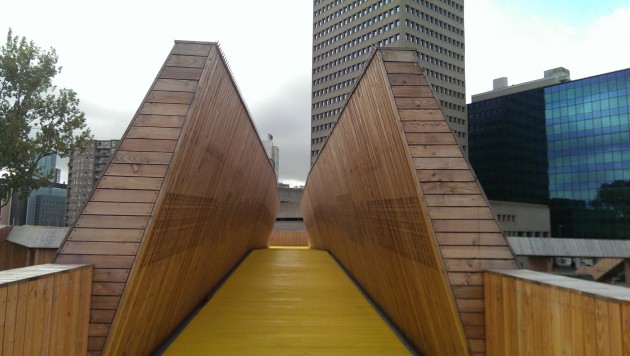
The forms these hubs and links take are highly idiosyncratic, forming up in unique ways that reflect the particular circumstance, maybe influenced by topography, or local preferences. My work over the last several months has taken me to events in various cities where I see ingenious, indigenous forms of connective tissue springing up. Often this is organic, seems to have just emerged serendipitously, and in other cases smart urban planning and investment has encouraged it.
In the Colombian city of Mendellin, which hosted UN Habitat’s World Urban Forum (WUF) this Spring, we saw two extraordinary examples of contemporary urban connective tissue. The escalators of Communa 13, which brought connection to the lower income hillside communities that were isolated from the commerce and cultural center of the city in the valley below. The effect of this intervention, which allows school children and workers access to previously in accessible opportunities, was obvious to the thousands of WUF delegates. Adjacent to the escalators are wonderful locally create murals, and there was even evidence of local business activity at the landings of each escalator, with small signs offering cell phone minutes, baked goods and tailoring services. Neighboring houses were provided with paint.

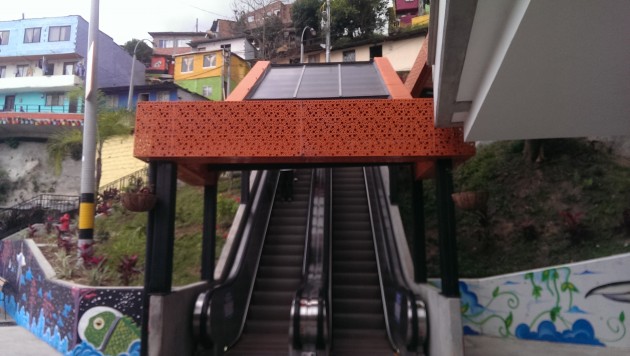
Also in Medellin is an aerial gondola system, again connecting the city across class and geography. Interestingly, in addition to citing a significant public library branch at the upper terminus of one of the lines, the city has even added a small biblio in one of the stations, where you can take a book along for the ride (although it’s hard to imagine the view from one of the ride ever getting old ..)
Also part of the WUF program was a side trip to see the Walk of Life—an ambitious construction and landscaping project to create walking paths being constructed to circumnavigate the top of the bowl in which the city sits, again, connecting previously disconnected neighborhoods. (I was reminded of this when reading TNOC Roundtable contributor Na Xiu’s description of the ring corridors in Chinese cities).
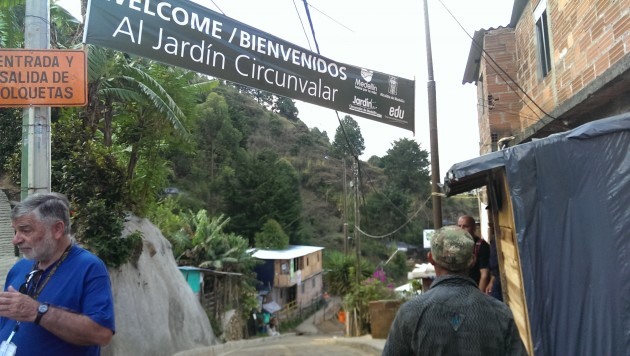

This is a perfect example of where the fostering and encouragement of social and natural capital meet—the project is part of an effort to protect the environmental and rural attributes of the Aburrá Valley’s mountainside. But what I also observed was the opportunity for people to connect.
In communities there can be anxiety when new forms of connective tissue are introduced that better connect people across class and race. (In the Roundtable, Colin Meurk asks the question whether green corridors enhance biodiversity, or accelerate pest dispersion. There is a human version of that question too, not as innocuous.)
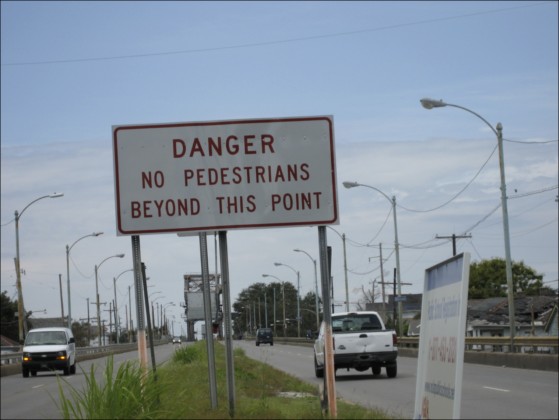
But a city’s capacity to adapt, self-correct, and thrive is totally dependent on connectivity and connection. Isolation of any one group of neighborhood spells disaster.
What’s interesting is to think about the interchangeability of infrastructure that provides these connections. Abandoned railway lines and elevated roadways being converted to linear parks brings social and ecological benefits to cities. Other assets created years before but no longer relevant to contemporary urban life are also suitable for transformation. The danger is that governments may lack resources, or imagination, or both—and miss opportunities to convert these assets into places that better meet contemporary urban needs. The High Line in New York City has become the much touted poster-girl of adaptive reuse of an obsolete elevated cargo rail spur. But that initiative came from two community members, who saw the possibility in that place and then marshaled the resources of government, local businesses and philanthropy to develop the most fabulous designs and transform it. So what was industrial—man-made—has been brought back to the natural (although with significant engineering and design help).
As cities become denser and less attractive to cars, streets (a city’s prime connective tissue) are being transformed into shared places for cycling, walking, and watching. Similarly, what people in Britain call ‘meanwhile spaces’—places in transition waiting for development—can easily be converted to civic uses, and made available for natural purposes (as Timon McPherson has argued so persuasively in this space). But this kind of transformation is only possible when city residents have the agency to make creative uses emerge. And these initiatives needn’t be as ambitious as New York’s High Line: they can be much more modest and simpler, requiring next to capital investment. Just a table, or two. And permission. Streets and sidewalks continue to be used as commercial and social corridors—through formal retail, or informal exchanges, used by self promoters or community groups.
Walking in the city of course is the best form of connective tissue, encouraging serendipitous connections, either informally or through the intentional programs to build urban literacy like the international Jane’s Walk.
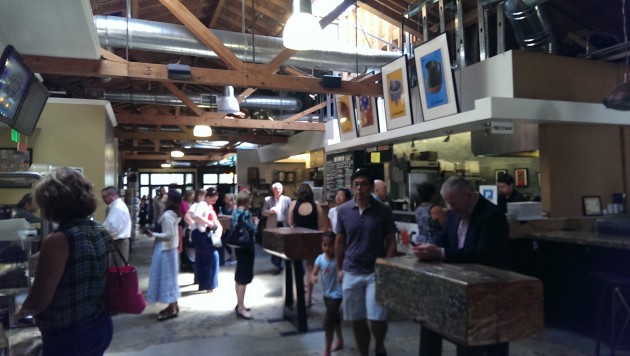

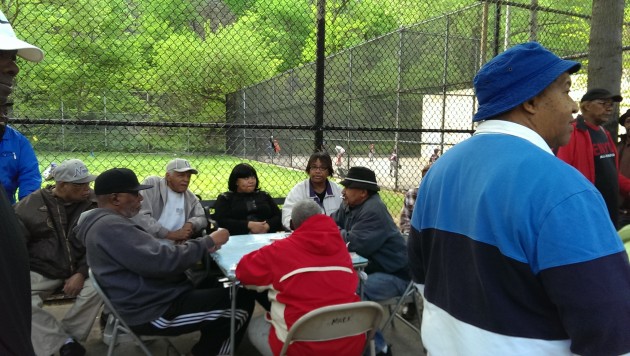
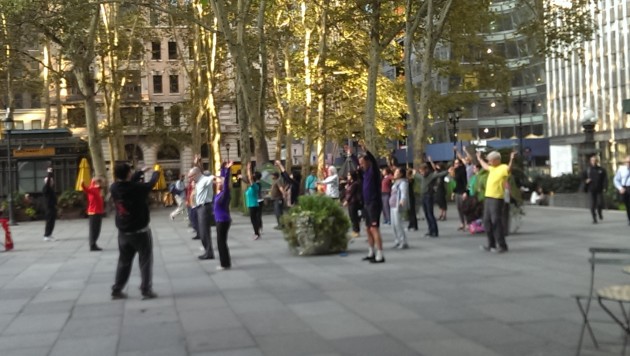

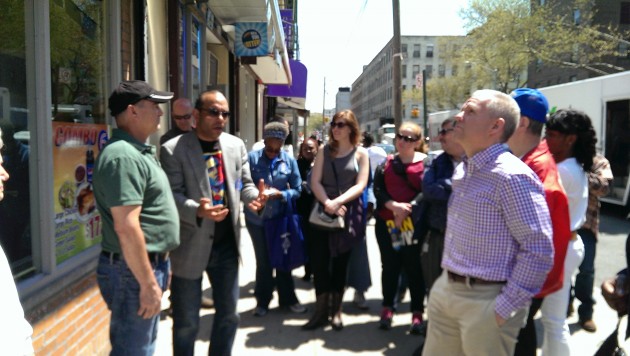
I’ve been pretty much consumed for several months, with support from the Knight Foundation here in the US, looking at how cities can better harness the potential of the physical assets they, or another level of government, own—libraries, community centers, pools, rinks, armories, markets, post offices, community hospitals, parks and parkettes—to better fulfill the purposes for which they were intended, that is to support the serendipity of the city that brings city dwellers together for common purposes.
And those purposes are really varied: they can be social, economic, cultural, spiritual, recreational. And its not just public facilities that cater to this fundamentally urban need to connect with ‘the other’. Private and institutional spaces provide this too: as we know by visiting our favorite coffee shop or gallery or faith place. People in cities look for hubs, places where they can do things they can’t, or would prefer not, to do alone or must do together. We’ve been referring to this mix of assets in any city as its civic commons, which I think mirrors the system of natural capital that courses through it, and that green corridors are intended to enable.

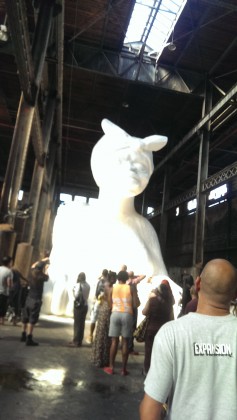
The nature of these shared activities has changed. We used to have public bathing. Town squares were used for hearings, public meetings, exchanges of goods and services. Port cities, like the one in which I live, have a deep history of enabling exchange. Although containerized shipping altered the nature of our ports, those spaces remain pivotally located along waterfronts, prime real estate often occupied by aging buildings and crumbling infrastructure.
But these places are ripe for reimagining into a new contemporary civic purpose, ideally located on the edges, the liminal spaces, where urban meets nature. Similarly, old industrial spaces offer opportunities for art and expression, attracting a diverse following. The gob-smackingly poignant Kara Walker exhibit, staged by Creative Time in the soon to be demolished Domino Sugar factory in Brooklyn, attracted thousands this summer.
In addition to changes in transport, over time lots of other factors have contributed to alter our places and patterns of collective experience and pursuit. We can buy a lot of things on-line; people of means can build their own swimming pools and private clubs. But still that urban urge to congregate, to intersect with difference and recombine to create something new and innovative persists. And our preferences continue to evolve. We may not bathe in public anymore, but more and more of us are looking for places to do our freelance work alongside others.
Or buy a hand-made piece of jewelry.
Or watch a movie.
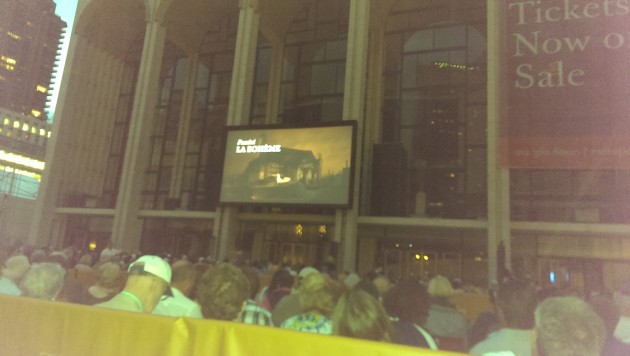
TNOC readers know that monocultures of every kind, if operating in isolation, will eventually die. The hubs we see in cities can become too self-similar, serving a smaller and less diverse user base, and offering a narrower band of activities and programs. They’re doomed: to shrinking funding sources, to diminishing variety of programs. Whether they’re run by governments or as a business, places with a diverse client base are much more resilient to change and circumstance, than ones that only serve a narrow band of users. Bringing connectivity between these often vibrant hubs can inject new energy and resources to them, and the system of which they are a part.
One of the ways to up the diversity of the user base may be to introduce more flexible programming, management, financing and governance of these spaces. In San Francisco, the city government offered a local architect/developer Doug Burnham an opportunity to create something on a few vacant lots adjacent to a narrow green park. He created Hayes Valley Proxy, a pop up space that uses shipping containers to house start up businesses, and a communal space for outdoor exercise classes, movie showings and various cultural events offered by neighbors. A local, apparently homeless, person voluntarily planted the borders of the lots and maintains them. (You see, people even mimic the concept of biotic ‘volunteers’!).
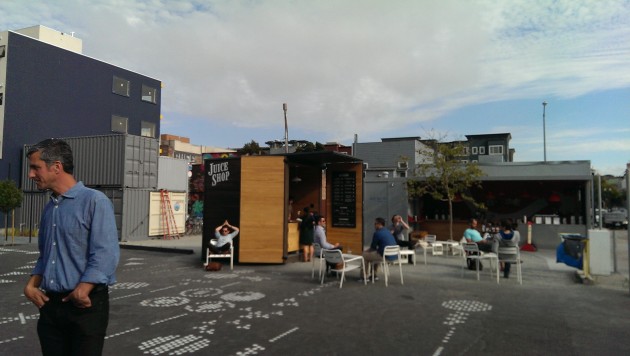

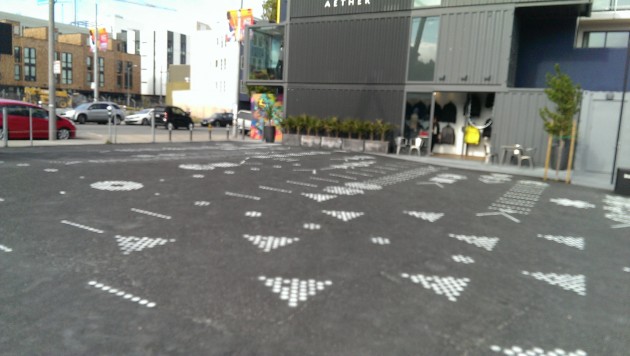
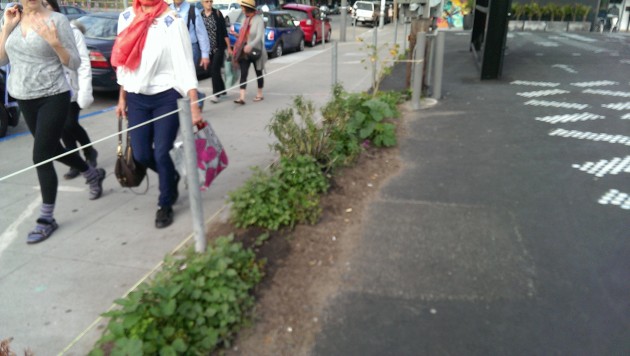
In the large and small cities of Europe you see the story of the flexible, evolving civic commons every day, with ancient buildings having alternatively housed religious, secular and civic purposes over the centuries (and perhaps all three at the same time). Civic squares, part of the vernacular design of traditional cities, are now used to host flash mobs, farmers markets, outdoor concerts, protests and public health clinics. Part the work we are beginning to advance here in the US is to think of a city’s civic assets as a system—an ecosystem—the civic commons, that could operate much more optimally were it better connected, coordinated, integrated.
And the provenance and current ownership of these spaces and places matters less and less, as city dwellers move freely between the public and private realms, often not knowing who actually owns what. Community hospitals house coffee shops; transit stations house libraries; parks host exercise classes. Can we move to a more sophisticated model of cross sectorial sharing- where civic functions are co-housed, co-curated, co-managed, co-financed by all sectors (no longer just government), and playing to the strongest skills, talents and capacities of each sector? We think yes. Lots of things are propelling us in that direction: scarcer public resources, innovative private/public partnership tools, and new demands from users.

New technologies make an aligned and integrated civic commons much more possible. Public libraries have been the early adopters of digital technology enhancements: we can reserve, borrow and return hard copy and e-books and movies. Parks are offering free wireless access, as are pubs and cafes, and Laundromats!

The potential is even greater than just the benefits of new apps and digital reading tools. The Estonian city of Tallinn has led the way in exploring the potential of digitizing civic services and functions—from postage to parking. Surely we’re not far from a time when our library card can also be our drivers license, be swiped at the local park to reserve a basketball court, used to redeem bonuses for fruit and vegetable purchases, or entrance into a public art gallery. The City of New York is joining other US cities in offering a municipal photo identification card to all city residents, regardless of immigration status, that also includes free admission to various cultural institutions. Access to the city: and the connective tissue that makes it work: its civic commons!
As is crucial to the natural life of cities, tools that enable the free movement of people and the social capital they create—civic corridors of connection—provide opportunities for both stimulation/pollination and respite. These are critical to the sustainability of the city as an organism, offering an attractive feature to a transient work force looking for a productive and attractive place to land and live.
But the best is always when the natural and human elements of the city intertwine, as they did for me on a recent visit to New Orleans, where I came upon the oldest form of self-fueling, aided by a local.


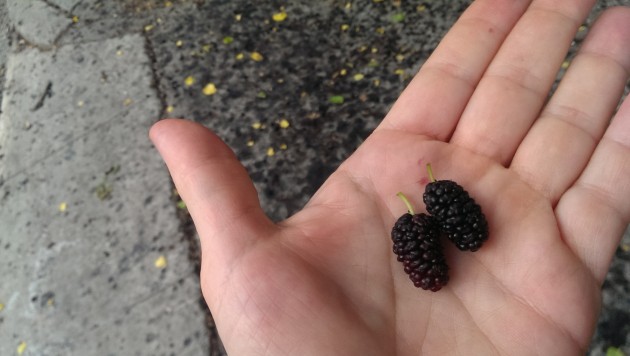
Finally, nature and city perhaps most poignantly intersected most recently in the various marches and civil actions stage in cities around the word in September, acts of solidarity concerning the need for action to halt and adapt to climate change.
I happened to be in London, UK that day. The tube enabled our travel. The streets and public spaces of Westminster allowed us to congregate and express our collective aspirations for a sustainable future. We refueled in cafes (and later, pubs) along the route.
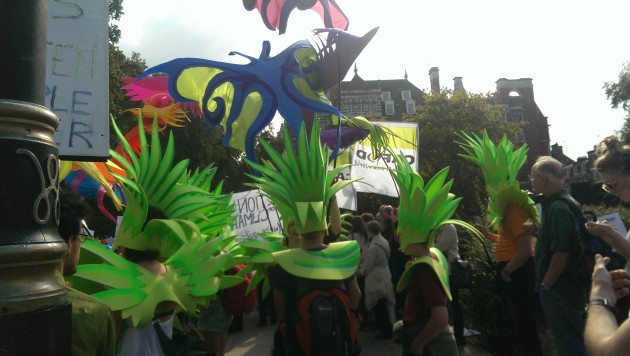

We cross-pollinated throughout, making the most pointed and profound case that we are, in fact, all connected in the ecology of the planet, of which cities are the crucial element.
As Marina Alberti said in her TNOC essay of spring 2014:
Paul Hirsch and Bryan Norton in Ethical Adaptation to Climate Change: Human Virtues of the Future, (2012, MIT Press) articulate a new environmental ethics by suggesting that we “think like a planet.” Building on Hirsch and Norton’s idea, we need to expand the dimensional space of our mental models of urban design and planning to the planetary scale.
Mary Rowe
New York City
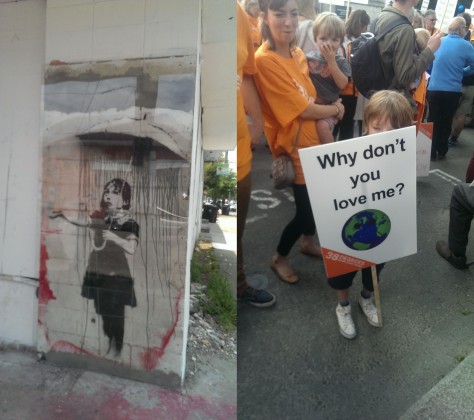





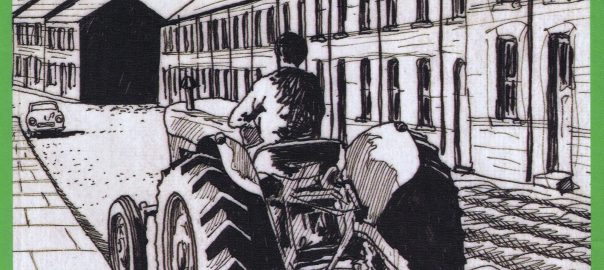
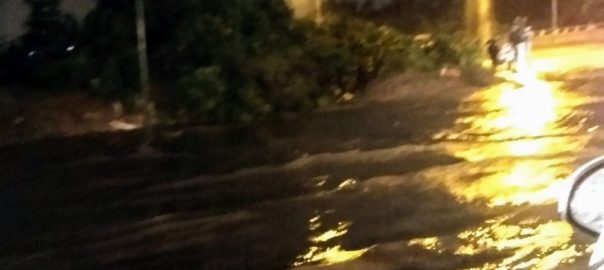
Leave a Reply